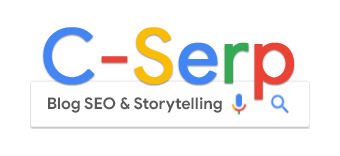How to optimize B2B PPC spend when budgets and confidence are low

By now, you’re almost certainly feeling the effects of the tariff teeter-totter by the U.S. that started earlier this month.
Economic instability seems to be a fact of life nowadays.
Large shifts in supply chains, along with stock market volatility, can be scary for advertisers.
It’s hard to contemplate spending money on advertising when uncertainty rules the day.
Here’s how to optimize B2B PPC campaigns in an uncertain economy.
How a tough economy impacts B2B businesses
B2B advertisers, who are selling products and services to other businesses, can be especially impacted by market swings.
When it seems like every business is experiencing difficulties, it feels like your whole pipeline has dried up overnight.
B2B advertisers might find that lead volume has dropped, or that velocity has slowed – leads take longer to close.
You might find that prospects are moving away from enterprise solutions and choosing smaller or mid-market solutions instead.
And tariffs can impact the entire supply chain, forcing a price increase to the end user.
Scary stuff. As a business owner, your first impulse is to stop advertising entirely.
Don’t fall into this trap! When faced with the need to cut costs, it’s tempting to look at advertising as an unneeded expense.
But it is more important than ever in a down market. There is still a market for your product or service.
Sure, leads might slow down and take longer to close. But it’s essential to be there when users are searching for you.
If you stop advertising, you’ll lose awareness and leads.
Then, when things turn around, you’ll have to start from square one.
Better to continue advertising, even if you have to reduce budgets, to keep leads flowing.
Think of it like investing in the stock market. This is a long-term play.
If you sell all your stocks now, you won’t be able to take advantage of market gains when things improve.
Advertising is a similar investment.
That’s not to say you shouldn’t adjust your strategy.
Performance changes are inevitable, and reacting appropriately to them is crucial.
Dig deeper: 5 tips for strong media planning during a recession
Key challenges and tactical responses
Here are some changes you might see in your B2B PPC accounts, and how to deal with them.
Increased number of competitors as demand softens
Across most of our B2B PPC accounts, we’ve seen that competition and ad depth have increased significantly in Q1 and into Q2.
Google recently updated its policies so advertisers can run multiple ads for the same business, app, or site on a single search results page, provided they occupy different ad locations.
This means that a single deep-pocketed advertiser can appear more than once for the same search query.
As advertisers fight for fewer customers, we’re likely to see this happen more and more.
What to do
As B2B advertisers, be intentional about what keywords you’re bidding on.
Drop any vanity terms or overly broad keywords that don’t convert well.
Now is not the time to bid on a short-tail term just because you feel you need to show up for it.
Be ruthless about what keywords get to stay in your paid search accounts.
Higher CPCs due to increased competition
As competition rises, CPCs are up nearly across the board in Q1 from Q4 levels.
In some of our B2B accounts, CPCs are up 80% or more quarter over quarter.
What to do
This is no time to set bid strategies and forget about them.
Careful monitoring of performance is crucial, now more than ever.
When CPCs are up this much, B2B advertisers can’t afford to let poor performing keywords or ad variations run for days or weeks. Fast action is needed.
Scripts can really help with performance monitoring, as can creating automated reports or alerts in your accounts.
This is also a good time to ensure you’re optimizing for the right customers.
If you haven’t set up offline conversions yet, make it a priority to do so as soon as possible.
Remember, smart bidding can only optimize for data it can see.
If your campaigns are driving a lot of form fills, Google will think that’s good, even if the form fills are all junk.
Feeding down-funnel data back into Google Ads is more important than ever to make sure you’re optimizing for quality, not just quantity.
Longer lead to sale times
I talked about lead velocity above. Skittish buyers are taking longer to make a purchase decision.
But that doesn’t mean they’re not doing research. And it doesn’t mean you should pull back on advertising.
When prospects are ready to buy, you want to be on their Day 1 list – the first company they call for when they’re ready to act.
About 92% of buyers end up buying from their Day 1 List, according to Rishi Dave of Bain. You want to do everything you can to be on that list.
What to do
When’s the last time you reviewed your ad copy and landing pages? Do they need a refresh?
Use your ad copy to weed out lower-quality prospects and tire-kickers.
This is always a best practice, but it’s never more important than in tough times when advertisers pay a premium for every click.
Ad copy should make it clear that yours is a B2B offering.
Use words and phrases like “For Businesses,” “Enterprise Software,” and so on to help discourage consumers from clicking on your ads.
Landing pages need to be extra-compelling.
User patience for less-than-optimal pages is thin.
Pages must:
- Grab visitor attention right away.
- Let users know you can solve their problems.
Otherwise, visitors will quickly bounce and go visit one of your many competitors.
Also, while it’s not strictly a PPC thing, make sure your nurture streams and retargeting strategies are in place and optimized.
Take every opportunity to keep users warm and remind them why they should buy from you.
Retargeting is especially important, and it needs to be done thoughtfully.
If you aren’t investing in B2B retargeting across all paid media channels, now is the time to stand that up.
If you are already doing retargeting, double down on optimizing those campaigns.
Simply serving a generic ad to previous site visitors won’t cut it anymore.
Make sure your targeting, message, and landing pages are as relevant as possible.
Lower conversion values
Recession-shy business decision makers are rethinking large investments in technology.
Businesses that might have been looking for an enterprise solution are now scaling back and looking at lower-cost local or regional vendors.
What to do
As mentioned earlier, offline conversions will be more important than ever.
Measuring results through the sales funnel and assigning values to each step allows B2B advertisers to take advantage of value-based bidding.
Using value-based bidding will help the smart bidding algorithm find your business’s highest-value prospects, focusing ad spend on the highest potential ROI.
Value-based bidding will help you attract customers willing to pay for the level of service you offer and weed out those looking for a lower-tier option.
You might also want to consider competitor conquesting.
Create ads and landing pages that describe how your product or service is superior to lower-cost alternatives.
Be sure to set specific KPIs for your conquesting campaigns.
Although direct lead generation from conquesting is challenging, it can be effective for stealing impression share and building remarketing audiences.
Tactically, use brand inclusions and exclusions to ensure your ads serve to the right searchers.
Carefully measure to make sure the campaigns are meeting your KPIs.
In a tough economy, if the conquesting space gets too crowded, you might need to bow out – but it’s worth testing to find pockets of opportunity.
Test lower-cost alternatives
If you’ve been putting off testing Microsoft Ads, Reddit, TikTok, or paid social, now would be a good time to test the waters of Google alternatives.
Microsoft Ads often sees lower CPCs than Google Ads and can work well for B2B advertisers.
Emerging platforms like Reddit are also worth testing, especially if your audience hangs out there.
Same for review sites like Capterra. If you’re in the B2B SaaS space, Capterra ads can be highly effective.
It’s time to get creative
Leave no stone unturned when trying new ideas that could improve efficiency and reduce costs.
Stay the course, but be smart.
By staying one step ahead of competitors, you can optimize your B2B campaigns for success in an uncertain economy.
Dig deeper: PPC survival – Handling inflation and being ready for a recession


